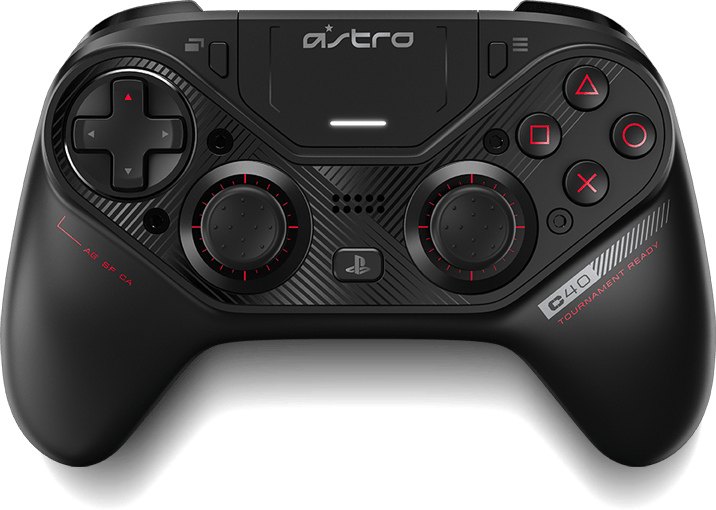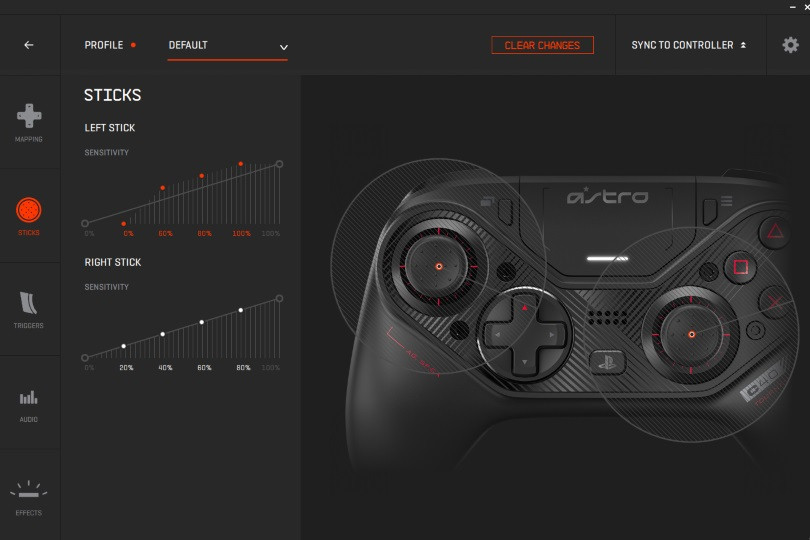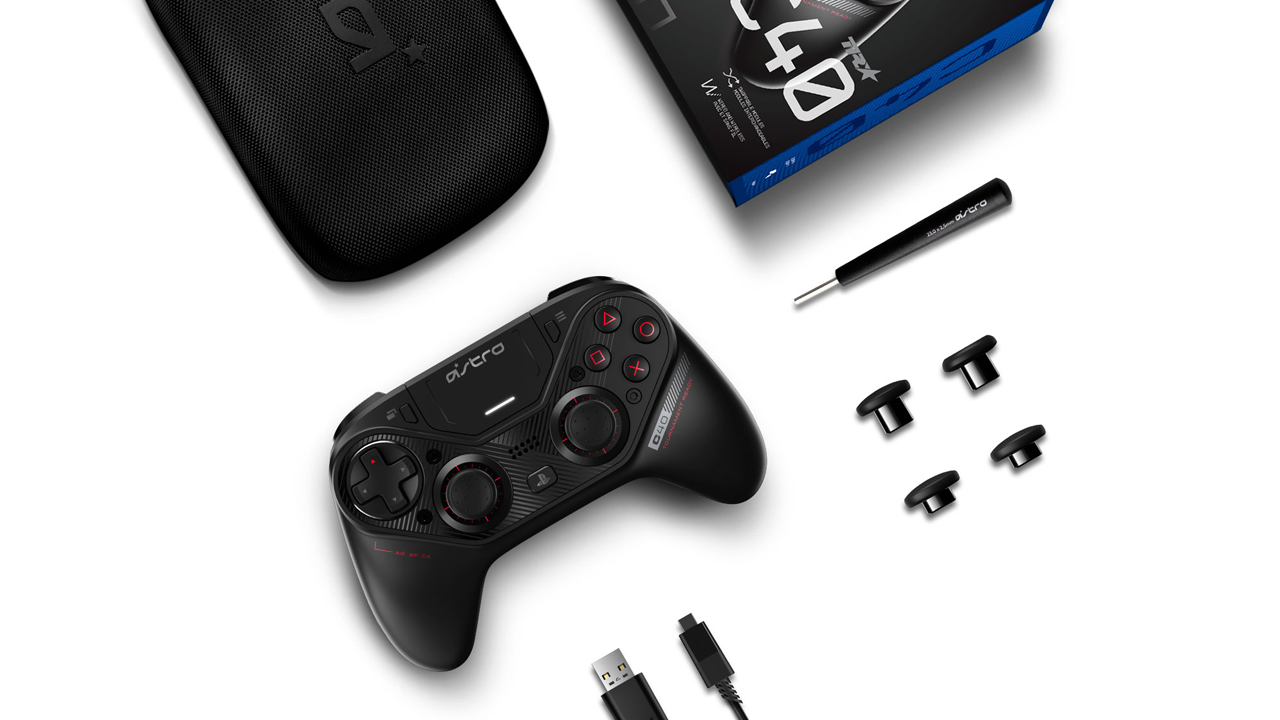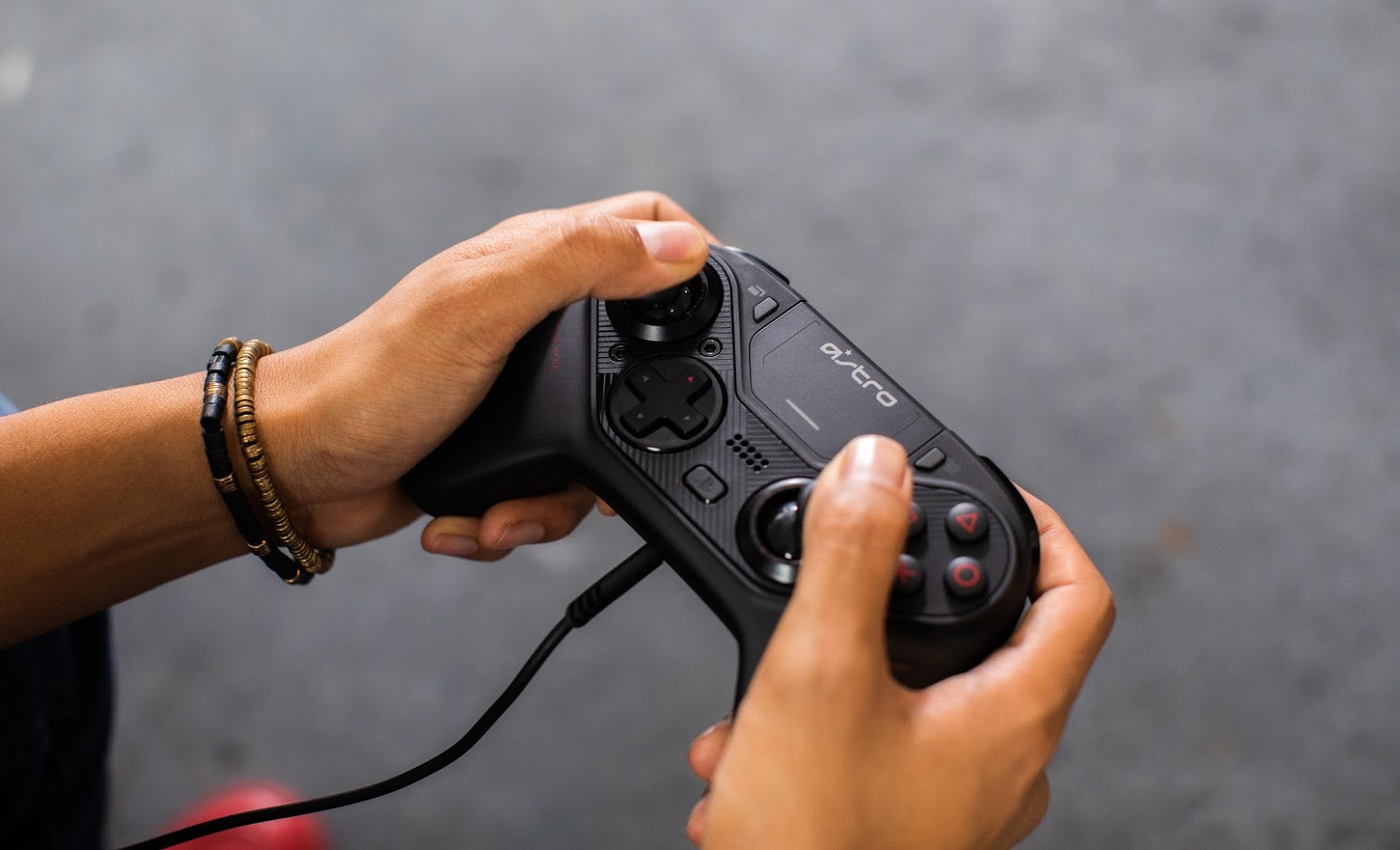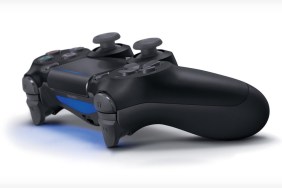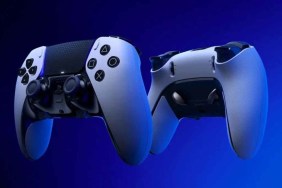When I first saw the officially licensed Astro C40 controller for the PS4, I was excited to see what the famed headset company could do in the controller space. Not only is the C40 stepping outside of Astro’s normal comfort zones, it’s also effectively Sony’s answer to the Xbox One’s Elite controller, and it had better be comparable, seeing as it’s got a price tag that’s $50 higher. But quality begets quality, and Astro doesn’t do anything halfway. The Astro C40 entered my regular controller rotation, and then it became my regular controller rotation as my five other DualShock 4s now collect dust.
First things first, picking it up and holding it just feels good. I had thought that the DualShock 4 was the pinnacle of controller design and comfort, but the Astro C40 sits so comfortably in my hands that going back to the DualShock 4 now just feels weird. While it could be compared a little bit to the Xbox style of controller, there are some key differences that make it feel uniquely its own, like a perfect hybrid between a DualShock 4 and and an Xbox controller. The grip along the back of the controller helps keep it right in place while playing too.
The build quality is impeccable, feeling sturdy and solid in my hands. There’s a bit of a heft to it, which again makes the DualShock 4s feel like plastic toys in comparison. Of course, the price difference of $140 says a lot about that. The C40 absolutely should feel far and away better than a standard PS4 controller. Surprisingly, it’s not metal construction, but just a really durable and quality plastic. That means that despite its solid build, it’s not overly heavy.
Astro C40 Review – Deep Customization for Accessibility
Customization of the C40 makes it the PS4 controller for people who like offset sticks in particular, and you can change out the thumbsticks for different heights and different surface patterns (concave or convex). While I keep mine in the standard symmetrical configuration, I do like the ability to change up my thumbstick game. I can’t use a DualShock 4 without KontrolFreek thumbsticks anymore, so to effectively have those built right into the controller is a nice touch. If you do want to swap the modules for an offset configuration, the process is really easy and quick. I’ve even considered trying out offset for first-person shooters and then swapping back for other games. It’s that quick and easy to do.
Tactile feel of the buttons is important too, and the C40’s face inputs all have a distinct click when they are pressed. Going back to a DualShock 4 almost feels muddy by comparison (and I’ve always thought that the DualShock 4 felt great). Flipping the controller to the back, we’ve got trigger locks that stop the full pull of the L2 and R2 triggers independently. It’s incredible how much this simple small change can drastically improve performance in a fast-paced shooter. Locking R2 and being able to do hairpin trigger pulls brought my performance in Destiny 2 up immensely.
And then there are the under-controller buttons. If you’re familiar with Scuf controllers, you might recognize the paddles that allow you to remap buttons like jumping or reloading so that you can keep your hands on the thumbsticks. The Astro C40 has actual buttons that sit just underneath your middle fingers when you hold the controller. Unlike a paddle that only has a single direction of play and can make the controller feel uncomfortable to hold, these buttons have a lot more leeway. There’s a single button on each side, which might be fewer than some pro controllers that include four total paddles, but I found them to be plenty. After being really impressed with Evil Controllers doing buttons instead of paddles, I’m glad that Astro decided to go that route as well.
Programming the underside buttons is really easy, requiring just a few quick button presses to map them to whatever input you want. The C40 also has two profiles easily accessible with a switch, so if there are two common configurations you use, you don’t have to go through the trouble of constantly remapping the buttons. Just switch to the appropriate profile for whatever game you’re playing. For me, Profile 1 is my permanent Destiny 2 setup, putting jump (X) and reload (square) underneath. Profile 2 is the one that I’ll change up for any other games I play if I need to.
There’s also a little known fact about the C40: you can remap any of the buttons, not just the underside ones, which makes it a pretty powerful—albeit expensive—accessibility tool. All of the remapping configuration can also be done through the PC software and then saved to the profiles on the controller. I’d recommend playing around with the configuration software when you first get one. There are a ton of options such as adjusting thumbstick and trigger sensitivity, which can’t be done from the controller itself, but any settings changes can be saved to one of the two profiles.
Being a tournament ready controller for pro players, the Astro C40 has the option of being used wired or wireless, again with the quick flip of a switch on top. The USB input sits recessed into the controller which creates a really solid connection with the special USB cable it comes with, preventing stress or strain on the connection. That recess also means that most standard USB cables won’t work with this one, so if yours gets lost or damaged, you’ll be going through Astro for a new one. The wireless connection is handled through a USB dongle. While it’s convenient, it doesn’t let you see the battery life of the controller on screen like a traditional DualShock 4, and you can’t turn the PlayStation on by tapping the PS button. It’s amazing how much I took those minor conveniences for granted.
Fortunately, battery life really isn’t an issue. Astro claims that the C40 has 12+ hours of battery life (which honestly, is just about worth the price point by itself), and in my testing, I found that to be true. I played a marathon Saturday of gaming for more than 12 hours total and the C40 persisted through all of it. It did die the next day, and when it did, it was quite abrupt, again due to no battery indicator on the PS4 giving warning that it was low. Still, most people probably aren’t going to be playing enough in a given day to run it down. Even during the week, I found that I was able to get through just about a whole week’s worth of playing in the afternoons and evenings without needing to charge it again. With the regular DualShock 4, I am swapping out a minimum of one controller per day as the battery dies, so the C40 is a refreshing change of pace.
It comes with everything else you’d expect a Dualshock 4 to—audio jack, speaker, PS button, a slightly smaller touchpad—save for one thing. The Astro C40 doesn’t have a lightbar on it, so for the rare game that does need the lightbar, you’ll have to use a DualShock 4. You’ll really only run into this issue in VR, and I actually ran into it completely by chance, otherwise I never would have thought to mention it. It’s not a deal breaker by any means, especially for the people that would consider dropping $200 on a controller.
The whole package comes in a nice hardshell case to carry everything around in and keep the controller clean and damage free. Designed for pro gamers who are going to be traveling with it, the hardshell case is even nice for somebody like me who mostly plays from home. It keeps my animals from knocking it off a couch or table, and when I occasionally travel with my PS4 and GAEMS case, the Astro C40 is ready to go with me. Promised customization options with the faceplate and thumbsticks will also ensure that you can make the C40 your own.
The Future of PlayStation Controllers is the Astro A40
I can only hope that Sony takes some of the design choices from the Astro C40 controller into consideration for the DualShock 5 or whatever the next PlayStation controller ends up being. The slightly smaller touchpad, extra customizable inputs for accessibility, and overall build quality are features I would like to see make their way into the next DualShock. Of course, there’s a reason the C40 retails for nearly $200, so don’t expect this to set the baseline for the next generation of controllers. Its feature set is a premium one, and it will most likely stay that way.
I also hope that Astro managed to future proof the controller. It’s a hard sell to ask someone to buy a controller that costs half the price of their console if we’re all moving into the next generation in less than two years anyway. In working directly with Sony, I would hope that the C40 would also function with the PS5 and I can continue to enjoy it beyond my time with the PS4. As long as Sony doesn’t change up the controller layout or add/remove inputs, there’s a really good chance that the Astro C40’s general USB input will allow it to be used with the PS5 in the future.
Since I got my hands on the Astro C40 a few weeks ago, I haven’t been able to stop using it. Even after long term use for a few weeks, the joy of picking up the C40 hasn’t worn off. It’s not just a part of my controller rotation anymore, it’s the only PS4 controller I use. The asking price is steep, but if you’re even considering getting a premium or custom controller, it’s well worth it to spend the extra for the C40. Battery life that is three or four times better than most all of my DualShock 4s is reason enough, but solid build quality and extensive customization make this a great controller for anyone, from pro gamer to weekend warrior.
Astro C40 review unit provided by the manufacturer. For more information, please read our Review Policy.
